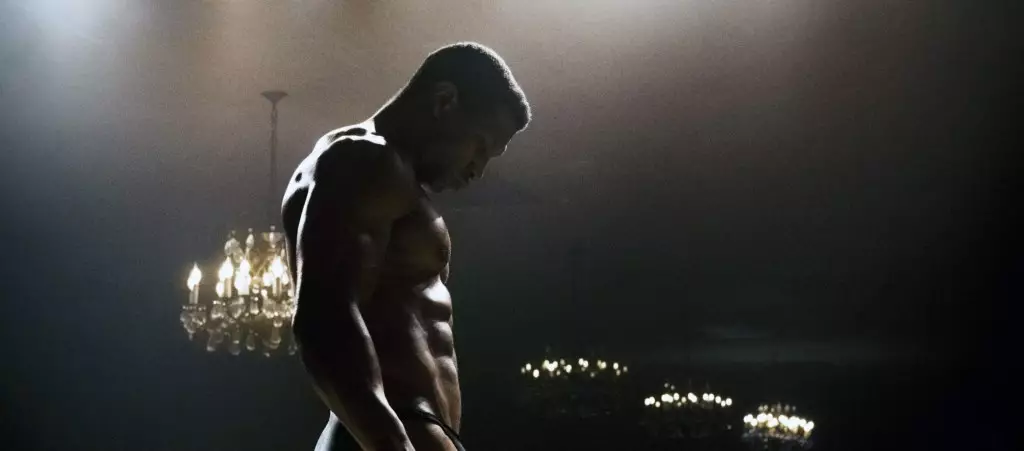The recent release of “Dreams,” starring Jonathan Majors, is emblematic of the unpredictable nature of the independent film industry. With an anticipated opening weekend of just $700,000 across 815 theaters, the film failed to reach its initially projected million-dollar mark. This shortfall, particularly troubling amidst considerable online buzz and a commendable verified audience score of 91% on Rotten Tomatoes, presents an intriguing contradiction. How can a film combine strong audience enthusiasm with such a lackluster box office performance? The specter of Majors’ legal troubles looms large, as his recent conviction for misdemeanor assault has cast a shadow over the film’s promotion, juxtaposing the palpable excitement at its Sundance premiere with the skepticism now surrounding it.
While cinematic excellence often hinges on the reputation of its stars, the fallout from controversies can be devastating, particularly for indie films that rely heavily on goodwill and niche audiences. In a landscape where the audience’s attention is fragmented, it raises a critical question: how much does an actor’s personal life affect the public’s willingness to support their work?
Documentary Dilemmas: An Unexpected Hero
In contrast to “Dreams,” Briarcliff’s documentary “October 8” has emerged as a surprising success with a projected $250,000 weekend debut at just 113 theaters. This strong performance comes on the heels of the tragic events on October 7 that intensified discussions on antisemitism in the U.S., proving that pressing societal issues often draw in a crowd. The film’s ability to resonate with audiences at a moment of crisis highlights a potent trend: documentaries addressing urgent social themes can buck box office expectations even more than mainstream narratives.
This shows a shift in audience engagement—people seem more willing to rally behind films that reflect or confront contemporary issues, especially when weighed against the backdrop of personal controversies surrounding fictional narratives. As such, niche documentaries might hold the key to reviving interest in indie films. Filmmakers can capitalize on the zeitgeist, creating thought-provoking content that resonates with sentiments of urgency and relevance.
Standout Success: The Sweet Spot
Another noteworthy case this weekend was “Secret Mall Apartment,” which has reportedly become a sensation with one of the highest per-screen averages for a documentary in six years. With an anticipated $40,500 from a single engagement in Providence, RI, the film seems to encapsulate the spirit of community that often fuels indie filmmaking. The narrative of disgruntled artists seeking their place amid disruptive development symbolizes a broader struggle—one that speaks to many creatives in today’s fast-paced, commercialized world.
Independent cinema thrives on stories that stir the pot, challenge norms, and offer new perspectives. In a cultural landscape ripe for rebellion against consumerism, films like “Secret Mall Apartment” can capitalize on this moment and foster audience devotion.
Striking a Balance: The Role of Drama and Festival Success
The dynamics of festival recognition also appear to play a crucial role in the release trajectory of indie films. A case in point is “Bob Trevino Likes It,” a double award winner at SXSW that debuted impressively with an expected $58,000 on just five screens. The ability of indie films to create an emotional impact is vital; they need to both entertain and evoke laughter or tears, showing that drama can be as engaging as blockbuster spectacles.
Such films stand as a testament to the resurging interest in character-driven narratives. The acknowledgment of their success at international festivals signals a shift in priorities within the cinematic landscape, where audiences are increasingly seeking depth and emotional resonance instead of mere escapism. This is especially true in a society grappling with tumultuous issues, and it illustrates a critical pathway for the future of the independent genre.
The Broader Implications for the Indie Sector
Examining the opening performance of “Locked,” a Sam Raimi-produced horror thriller also underscores the diversity in emerging indie films, which led the charge this past weekend. With a gross of $964,000 across 964 locations, it reflects both that genre-specific films can still find commercial feet and that there remains a significant appetite for horror among audiences.
Thus, the indie sector must navigate an increasingly complex landscape—where star power, societal discourse, genre exploration, and festival accolades intertwine. The urgency for indie filmmakers now lies in innovating narratives that address societal issues, embrace community spirit, and explore diverse themes, so they can both captivate audiences and keep the spirit of independent cinema alive in an era dominated by high-budget franchises and superhero spectacles. The innate creativity and challenge faced by filmmakers in this sector symbolize a unique resilience—a testament to the tenacity of storytelling in any form.

